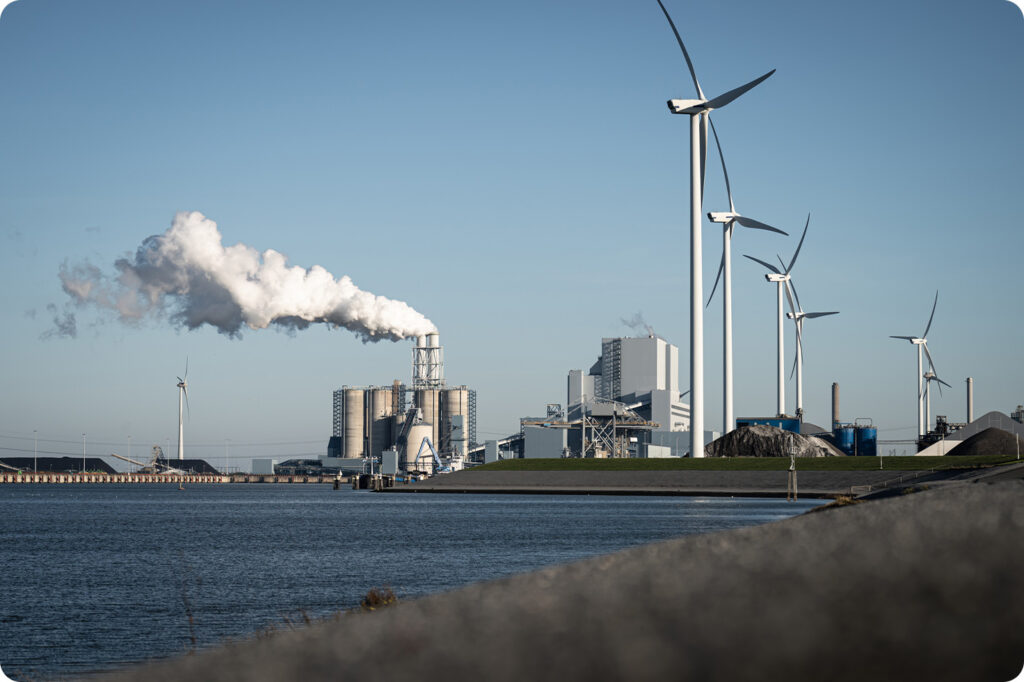The top five climate risk and disclosure stories this week.
Want access to deeper insights and curated climate news? Request a demo of our solution today.
Over 1,000 companies set net-zero targets, but only 4% meet UN standards

Data from Net Zero Tracker shows that over 300 more large companies have set net-zero targets since June 2022, taking the total to over 1,000. However, only 4% of these commitments meet best-in-class standards set by the United Nations (UN).
Furthermore just 37% of targets fully cover Scope 3 emissions, while a scant 13% specify “quality conditions” under which carbon offsets would be used to meet their goals — suggesting most companies depend on low-quality offsets rather than emissions reductions to meet their climate goals.
Net Zero Tracker has assessed the emissions targets of 1,003 companies belonging to the Forbes Global 2000 list of the world’s largest firms. However, vanishingly few adhere to the UN’s Race to Zero “Starting Line criteria”, which require targets to cover all greenhouse gases produced by a company — meaning Scope 1, 2, and 3 emissions. The criteria also request that companies set clear conditions for the use of carbon offsets, implement a climate transition plan, and make immediate emission reduction efforts, among other things.
“A clear line in the sand on net zero has surfaced. Countless net zero targets are credibility light, but now we can say for certain that most of the world’s largest companies have shifted to the right side of the line on net zero intent,” said John Lang, project lead at Net Zero Tracker.
Almost all UK companies in the Forbes Global 2000 have net-zero goals, with 72 out of 77 setting targets, according to the group. Only one UK-based company in the list — private equity firm 3i — has yet to establish a climate mitigation target.
2023 “virtually certain” to be warmest year on record, say EU scientists

This year is set to be the warmest since records began, with a global mean temperature 1.43°C above the pre-industrial average, European Union (EU) scientists say. This is close to the 1.5°C warming limit that countries said they’d strive to stay below in the 2015 Paris Climate Agreement.
The scientists’ prediction follows new data out of the EU’s Copernicus Climate Change Service (C3S). The service reported that October’s temperatures reached new extremes, with an average surface air temperature of 15.30°C. This is 0.85°C above the 1991-2020 average and 0.40°C higher than the previous warmest October, recorded in 2019. This anomalous October means that 2023 is set to surpass 2016 as the warmest year ever recorded.
Temperature extremes have spiked this year due to a combination of factors, primarily human-induced global warming and the return of El Niño conditions, a recurring climate pattern that sees warm water rise to the surface of the Pacific Ocean. C3S said this September was also “unprecedented” for temperature anomalies. That month, average temperatures were around 1.75°C warmer than the preindustrial September average.
Commenting on the findings, Samantha Burgess, Deputy Director at C3S, said: “The sense of urgency for ambitious climate action going into COP28 [the United Nations Climate Change Conference] has never been higher.”
Insurers still underwriting fossil fuels amid climate risks — report

Global insurers continue to underwrite planet-warming fossil fuel activities even as escalating climate disasters have forced them to withdraw from key markets, a coalition of advocacy groups has said.
The Insure Our Future campaign published its seventh annual scorecard of insurers’ climate policies on Thursday. This reveals that many top firms continue to underwrite oil and gas expansion projects that do not align with the 1.5°C warming limit enshrined in the 2015 Paris Climate Agreement.
The scorecard says fossil fuel insurance earned the industry approximately US$21.3bn in 2022, with the Lloyd’s of London market leading the way, generating an estimated US$1.6-$2.2bn in annual premiums. However, as climate risks surge, insurers are now looking to limit future losses from the very disasters caused by the polluting activities they support.
Many primary insurers, including State Farm, Allstate, Chubb, Tokio Marine, AIG, and Berkshire Hathaway’s AmGUARD, have withdrawn from the California home insurance market due to climate-driven disasters, such as out-of-control wildfires. Similar withdrawals have occurred in Florida, Louisiana, and parts of Australia, leaving homeowners exposed to these risks and facing decreased property values. In addition, available reinsurance capacity fell by 20-25% in 2022, limiting insurers’ access to protection and leading to a spike in premiums.
“If insurance companies took climate science seriously, they would fully align their underwriting and investment strategies with a credible 1.5°C pathway and end all support for increased fossil fuel production. They would be suing fossil fuel companies, to make polluters pay for the growing costs of climate disasters and keep insurance affordable for climate-affected communities,” said Peter Bosshard, global coordinator of the Insure Our Future campaign.
Since 2017, insurance payouts for natural catastrophes have doubled to an average of US$110bn annually. Still, many insurers have gappy fossil fuel underwriting policies that allow them to continue supporting oil, gas, and coal. Insure Our Future finds that companies with less than a 20% share of the commercial property and casualty market and around 50% of the reinsurance market have taken action to limit oil and gas underwriting. The shares are higher when it comes to coal underwriting policies.
German insurer Allianz scores highest for its overall fossil fuel policies, followed by Italy’s Generali, the UK’s Aviva, and reinsurance giant Swiss Re. Allianz is the only insurer to score 10 out of 10 for its coal policy. Aviva, Generali, Allianz, Hanover Re, Talanx, and Munich Re have all halted insurance for new oil and gas production without major exceptions. However, none of the 30 insurers assessed have ceased underwriting new gas power plants and almost none have stopped supporting liquefied natural gas (LNG) terminals.
Central bank group unveils new climate scenarios

The Network for Greening the Financial System (NGFS) released the fourth edition of its long-term scenarios for analyzing climate-related risks to the economy and financial system. This includes a new “Too-little-too-late” scenario that estimates the fallout of a disorderly transition to a net-zero world.
The group of climate-focused central banks and supervisors have been publishing climate scenarios since 2020. These are designed to help financial institutions and the authorities that oversee them project climate-related impacts.
The latest set of scenarios have been updated with the latest GDP, population pathways, and country-level climate commitments data. The orderly transition scenarios now factor in climate policy delays and the energy crisis resulting from Russia’s invasion of Ukraine. Additionally, the modeling of acute physical risks has been improved with the inclusion of new hazards — namely droughts and heatwaves — as well as more detailed geographic data.
Alongside the new “Too-little-too-late” scenario, which highlights the consequences of stop-start climate policies, the NGFS has also introduced an “Orderly” Low Demand scenario, which narrates a successful transition to a 1.5°C world driven by “substantial behavioral changes.”
To accompany the scenarios, the NGFS also published updated technical data on the scenarios, step-by-step instructions on using the NGFS Scenarios Portal, and a note investigating “compound shocks.” These are combinations of hazards that lead to societal and environmental consequences.
One example of a “compound shock” is a prolonged drought that gives rise to wildfire conditions. Another is the erasure of forests and wetlands leading to reduced natural flood protection, resulting in more severe inundations at times of heavy rainfall or storm surge. Compound shocks may also result from combinations of physical and transition risks — like the sudden implementation of strict climate policies by a country after it suffers a local climate-related disaster.
The NGFS plans to update its scenarios in 2024 to include greater sectoral granularity and potentially a souped-up chronic physical risk component.
Market bewildered by transition plan frameworks, says CBI

The Climate Bonds Initiative (CBI) says the expanding number of climate transition planning frameworks is “causing confusion” among corporations, and has produced a mapping to identify “common ground” between them.
In a report Thursday, CBI — a non-profit focused on spurring investment in the low-carbon economy — provides an assessment of 13 transition planning frameworks developed by organizations including the Glasgow Financial Alliance for Net Zero, UK Transition Plan Taskforce, Transition Pathway Initiative, and others.
This exercise found “consensus” on core principles, particularly around the setting of credible decarbonization targets, developing strategies, and embedding accountability. However, CBI finds some differences in how these principles are interpreted across frameworks. For example, significant variations exist between frameworks on the inclusion and frequency of interim emissions targets, recommended transition pathways to benchmark against, and the need for independent validation of transition plans, among other things.
The group sorted transition planning and implementation into five or six broad categories and claims this classification can be used by financial institutions to gauge which corporates can be “credibly included” in a transition-focused portfolio. CBI plans to roll out a “navigator tool” by January 2024 to help financial institutions align their investment portfolios with the 13 assessed frameworks.
CBI collaborated with Climate Arc, the Institutional Investor Group on Climate Change, and the Sustainable Markets Initiative on the exercise.

